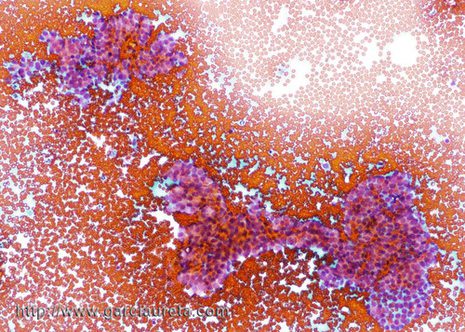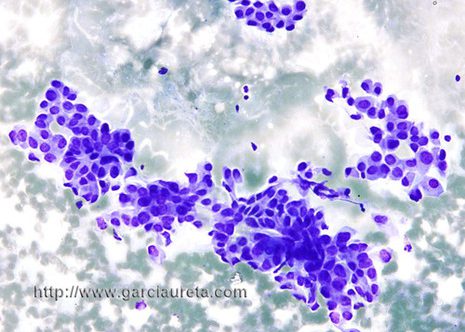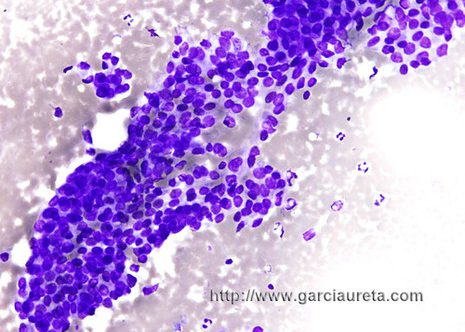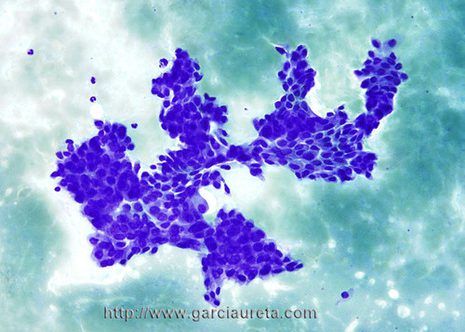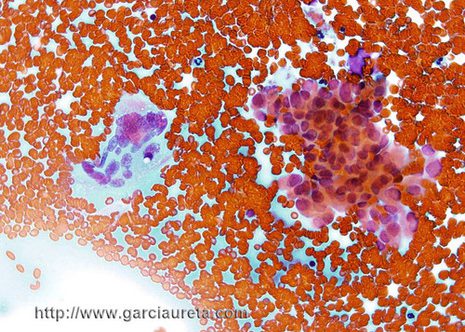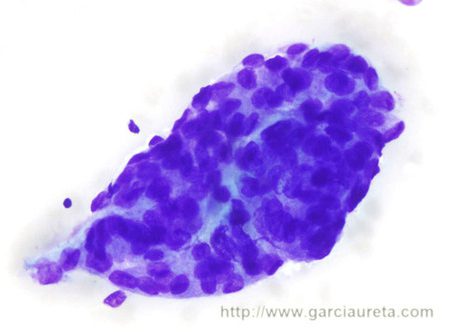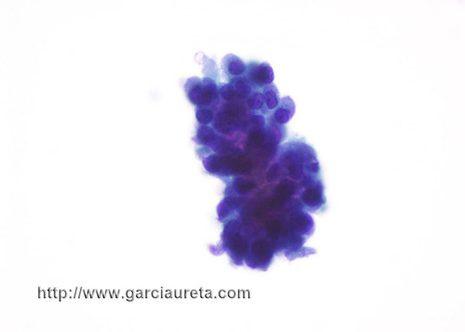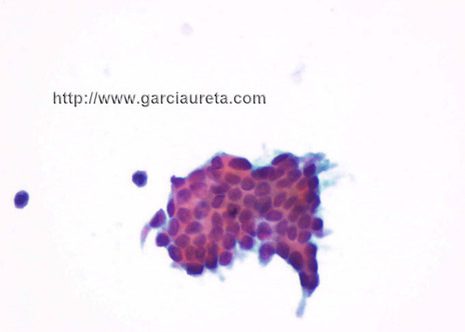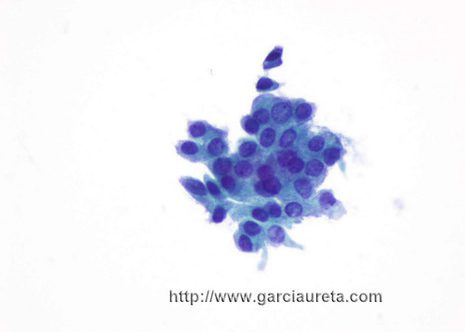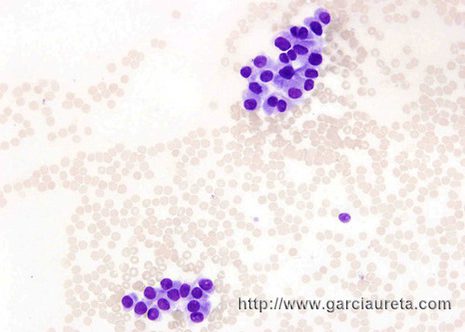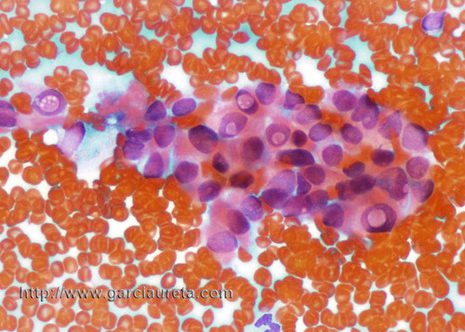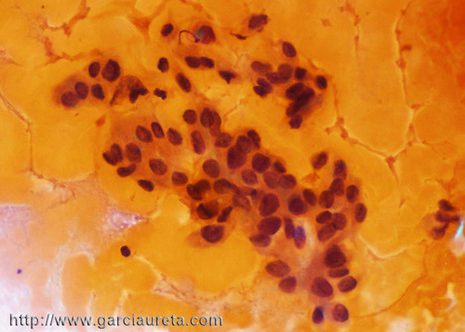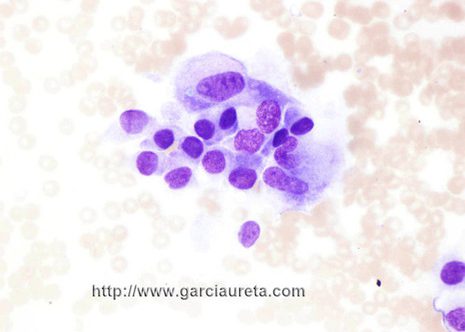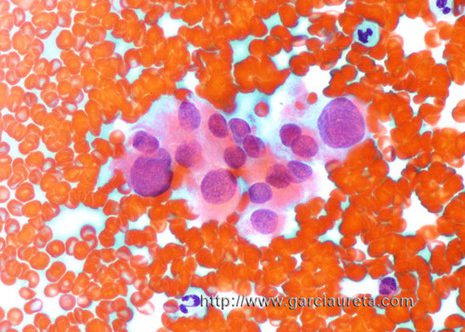Fine needle aspiration biopsy (FNAB) in a simple quick and inexpensive method that is used to sample superficial masses. One of the most accessible organs that is frequently selected for FNAB is the thyroid gland, FNAB has become integral in the workup of patients with thyroid nodules. Currently FNAB is an excellent minimally invasive low risk procedure that easily and rapidly and with high accuracy differentiates individual with benign disease from those with suspicious or malignant nodules.
Although thyroid nodules are frequent only a small percentage are actually cancerous. Because the vast majority of thyroid nodules are being representing nonneoplastic conditions such as goiter or thyroiditis patients can be managed conservatively with follow up and/or suppression therapy.
Papillary carcinoma the most common malignant neoplasm of thyroid comprises about 60% of all thyroid carcinomas. It occurs more frequently in women. Papillary carcinomas are seen in all age groups with a peak third decade. Patients present with a solitary often cold nodule that may feel hard or more firm than the palpable nodules of nonneoplastic goiter. The most frequently occurring carcinoma that is the easiest to identify cytologically is papillary carcinoma. This tumor may undergo cystic degeneration with significant distortion of the usual cytologic picture of papillary carcinoma.
The images correspond to a 54-year-old at her wise-healthy woman was found to have a right thyroid nodule during a routine physical examination. She had no symptoms of thyroid dysfunction and results of thyroid function test were normal. The patient´s medical history was unremarkable.
FNAB smears of the thyroid contained numerous sheets and syncytia of epithelial cells that occasionally suggested papillary formation. Nuclei varied in size and shape with pleomorphism, small nucleoli and intranuclear inclusions. The cytoplasm was scant basophilic and defined. Colloid was absent.
A diagnosis of papillary carcinoma was made.
